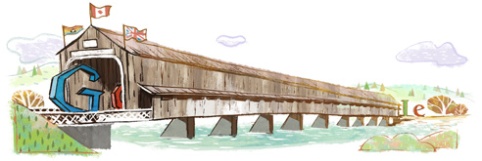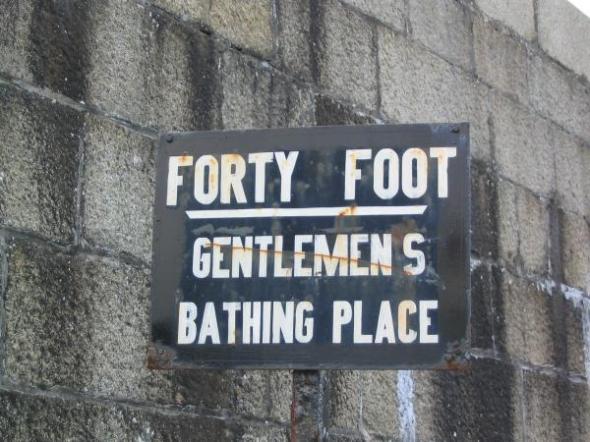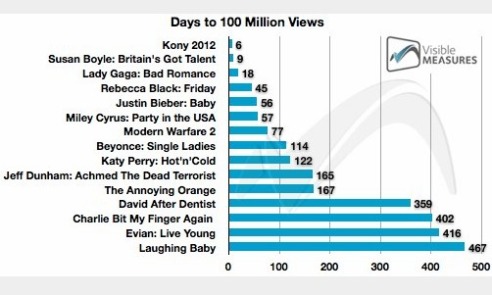The Interesting Bits are Hidden in the Quieter Corners
July 31, 2012
I remember being in college in the mid-1990’s, and having borrowed a login code from a classmate who was in the ‘Internet Society’, we would gather around a PC and marvel at the 23,500 websites that existed on the Information Superhighway. You could find whatever you wanted and surf away. It was an exciting, amazing time.
Now, according to someone who counted them, there are 644 million active websites.
Despite this incredible growth somehow the internet seems like a lot less exciting a place than it was nearly 20 years ago. To go online in 2012 can seem very functional and practical. Gone is the pioneering spirit felt in 1995 when the random beeps of a dial up modem built a sense of expectation (combined with the sense of fear that having invested considerable time the page you were waiting to load might crash).
The extent to which the internet has become a functional and practical tool is borne out when we consider that despite the 644 million sites 50% of Irish web traffic comes from only 20 domains. These are the big names sites, the high street brands of the internet. Their role in people’s lives has become so integral and ubiquitous that they have also become quite mundane and hard to really get too excited about.
Yes, Google routinely come out with innovations that generate that wow moment – where were you when you first spun our planet around and zoomed in and out on Google Earth? remember looking for your house on Streetview? These tech marvels aside our day to day use of the internet can generate the same excitement and wonder as a visit to the bank or motor tax office – largely because our day to day internet usage involves visits to the bank and motor tax office.
It is true that we have been anaesthetised by the routine excellence of the big sites. The most trafficked parts of the internet while useful are ultimately pretty dull. (As if to celebrate dullness a recent Google doodle marked the inauguration of the world’s longest covered wooden bridge).
We need to remember to stray away from the high street of the internet and become surfers again. It is in the quieter harder to find corners of the long tail, where people express their passions and talents, that the internet becomes really exciting. Before your mind wanders towards the gutter this can be a passion for bookshelves, the dumping ground where the US Navy skuttles their ships or photos of people reading books on the New York Subway.
The beauty of the long tail is that you can endlessly recreate the excitement of the internets early days and find whatever it is you didn’t realise you were hugely interested in seconds before.
-Garret
Enjoy!
Aoife
Enjoy!
Aoife
The Power of Communication
July 22, 2012
From weddings, to birthdays to last days in work – speeches are written all the time. Although often predictable, or lacking in originality, sometimes speeches have the power to change not only our thinking, but our motivations and behaviour. The best speeches are those that inspire.
Brands communicate consistently too. Just like speeches, ads are all too often easy to ignore. Yet sometimes, an ad comes along that’s so powerful, it both moves and stays with us.
I would urge anyone who shares my passion for communication to check out two videos. The first features Lord Saatchi discussing the importance of beliefs. The second is a particularly moving scene from Mad Men. This is one of the best examples I’ve seen of how powerful an insight can be when arrived at properly.

Of course, most ads are made with some sort of KPI in mind, whether its sales or market share. But isn’t it wonderful when an ad holds the power to move us? When we’re forced to revaluate a long held certainty, or when a belief is reinforced?
-Carly
Me, Myself and Radio
July 17, 2012
Suffice to say I’m still pretty new to the media game, I’ve been working in OMD for about 7 months now and I’m pretty sure my friends and family still have no idea what it is I do all day. I’ve always been interested in media, even if I didn’t realise at the time (I often referred to it as marketing or advertising) and certainly since joining OMD I’ve become even more aware and more curious as to the ins and outs of the industry.
Of late radio in particular has caught my attention – not only are stations looking for listeners, but they’re also looking for advertisers. As a media planner I find myself involved with stations on two levels..firstly as a consumer of their products and secondly as the person responsible for purchasing their ad space. Two current campaigns, one from Dublin based station Radio Nova and the other from Independent Radio Sales (IRS) have made me think of the whole model on which advertising is based…the two underpinning successes of radio stations are audience and revenue. Both are key to a stations success and with media budgets and audiences (in some media) declining….it’s refreshing to see that radio won’t back down and will continue to fight it’s corner.
The first campaign that caught my attention was the current ‘Addiction’ campaign from Radio Nova – every morning without fail for the last number of weeks one of these eye catching ads speeds by me on the 46A. Bloom have created four pieces of striking creative for the outdoor campaign – each is a clever play on words drawn from popular song titles which most members of the public will be familiar with.
I like these ads a lot, as I mentioned they’re clever but they’re also incredibly simple. The message ‘Seriously Addictive Music’ is exactly what Nova is about and just like Nova the campaign is unique, it’s also just a little bit daring and puts a smile on my face first thing in the morning. It’s also a first for a radio station in that it features the listeners rather than the presenters that would typically front such a campaign.
While Nova’s campaign is very much listener focused a second radio campaign for ‘Ireland FM’ is vying for the attention of the industry. Fronted by ‘Hot Hal O’Day’ a new campaign took to the airwaves last week to promote Ireland FM, Ireland’s biggest radio network. The campaign for IRS aims to send out the message that buying a package through IRS can reach over 1.5 million listeners on local radio stations. The campaign has only just gone live but we in agency land have already had the pleasure of meeting the one and only Hot Hal, in fact I even received a personal video greeting from the man himself highlighting all the benefits of Ireland FM. Although this second campaign is entirely different to Nova’s, it too is intriguing.
– Sorcha
Enjoy!
Aoife
Clicktivism Versus Boots on the Ground
July 10, 2012
We all have childhood memories, some are through rose tinted glasses- I’m almost sure I spent my Irish summers on the beach- in reality it was probably just a few days here and there.
There are however, some memories clearly etched into my mind that are no feat of my imagination and these came in the form of feet on the ground protesting- pioneered by my steadfast mother.
I was fortunate enough to grow up beside the infamous bathing area the Forty Foot, formerly known as “The Forty Foot Gentleman’s Bathing Place”.
Having a rowdy brood of six children under her wing, my mother knew the benefit of exercise and the calming and soothing effect of the great Irish Sea. Never mind the traditional Christmas day swim- come rain, hail, shine, snow we were plunged daily, all year round into the waters of Sandycove. However, if the tide wasn’t with us or it was too choppy we were forced out of the cove and round to the Forty Foot. As children, we knew the Forty Foot was a male only area, we knew there were nudists around the back area- who occasionally came around the front, we knew there were men on the gate- who shifted their bodies’ dominantly so as to obscure the entrance into the Forty Foot, we didn’t want to cross this line. Our mother, however, had a different perspective, she wanted to swim, she wanted us to swim and that was that. So, as instructed, we squeezed, we scurried and we marched with our heads held up high past the men, we swam, we were nervous, we were snorted at- but we had protested, we were boots on the ground and slowly but surely more women came, more children came, the signs were changed, the ringing of Julius Ceasar’s conquering speech rung in our ears “Veni Vidi Vici”
This is one of many marches we were taken on as children in the 1980s, others such as the cuts against teacher’s pay and Wood Quay demonstrations provided us with rounded characteristics and the strength to fight for our rights.
Now, as a mother myself, I know my son won’t be exposed to such marches- because for more than a decade revolutionaries and culture jammers have been paralysed by the computer screen. Activism has now been replaced with “Clicktivism”- destroying traditional Boots on the ground protesting. Clicktivism has been defined as “the use of social media and other online methods to promote a cause”.
Many have argued that clicktivism has polluted meaningful social activism, however, in the aftermath of the controversial #Kony2012 campaign many netizens have seen its potential to shape the real world. The Kony 2012 video caused for the arrest of Ugandan war lord Joesph Kony, who had recruited child soldiers to wage war in Uganda. The video is now considered the most viral video in history and got unprecedented support. The below chart shows how quickly the video actually spread, the amount of days to a 100 million views was just 6, beating Susan Boyle and Lady Gaga.
The makers of the video have been criticised for being too simplistic in their approach to the problems in Uganda, however since the video was released on March 5th, one of Kony’s LRA compatriots have been captured and more troops have been deployed to central Africa.
So, it does appear that some clicktivism can result in real action, however “liking” something on Facebook, or retweeting on Twitter is actually in the “slacktivism” category- which is defined as “actions performed via the Internet in support of a political or social cause but regarded as requiring little time or involvement, e.g. signing an online petition or joining a campaign group on a social networking website”.
I think the future requires a healthy mix of clicktivism, slacktivism and feet on the ground, we need to use all tools, we need to get the balance right to get the results we want… “whatta do we want… we want change”.
– Oilbhe
Enjoy!
Aoife
A New World of News
July 3, 2012
The press market has changed massively over the last five years; that much is not news. Press advertising spend fell off a cliff between 2008 and 2009, and between 2007 and 2011 overall, fell by 51%, ahead of the overall market decline of 42%. By 2011, only 34% of adults were reading a newspaper every day, compared with 51% in 2003. Unsurprisingly, the drop-off in daily readership is more pronounced at the younger end of the market.
On the flipside, consumption of online media goes from strength to strength. The Irish appetite, once thwarted by broadband availability issues, is (according to ComReg) now the largest in Europe, just ahead of the UK, France, Germany and Spain. Unsurprisingly, the money is following the audience and between 2010 and 2011, Irish online advertising spend grew by an enormous 20%.
With this kind of pressure on newspaper publishers, and the massive migration of audience online, it’s no wonder that print brands are scrambling to find a way to make money from their online offerings. In essence however, there are only two ways they can do this; by selling content and by selling advertising.
Selling advertising is working, if not quite paying all the bills. Selling subscriptions is a little more difficult – how do you persuade people to pay for something that they can not only get elsewhere for free, but that they used to get from you for free? Sounds impossible. But then, Apple somehow persuaded Gen Y-ers who grew up with Napster and other file-sharing tools, to pay for their music, in some cases for the first time ever.
Pricing online content is incredibly complex, as Autosport Magazine discovered when they realised that more people would pay 88p for a single article than 89p for a week’s subscription. When our assumptions about how consumers will rationally behave are undermined like this, it’s very difficult for media owners to know how to sell. Thus far, ‘trial and error’ seems to have been the approach of choice, and finally this may be paying dividends.
At the extreme end is The London Times, which offers no access at all without payment. By contrast, some sites offer a certain amount of content for free, but put their ‘best’ content behind a paywall. But it’s the ‘metered’ system now seems to be gaining favour – which allows you to see a certain amount of content for free during a particular time period, but will ask for a subscription when that time period elapses.
As online media owners come closer to optimising their revenue generation plans, we’ll continue to watch with interest. Ultimately, how this effects advertisers is still unclear. What is clear is that with continuing growth in demand for online media from both consumers and advertisers, this is one area where a seller’s market prevails.
Enjoy!
Aoife










